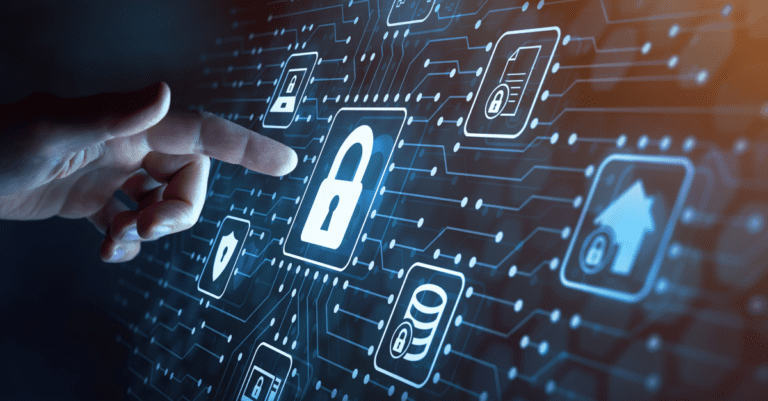As a Chief Information Security Officer (CISO), safeguarding your customer’s data is of the utmost importance, and having a mature security program led by a CISO or vCISO is vital to the success of your data protection plans. In addition, implementing rigorous safety measures to protect customer data ensures compliance with privacy regulations, and it also fosters trust and confidence among your customer bases. That’s why in this article, we will break down the key strategies and best practices for protecting customer data.
Data Classification & Inventory
Begin by classifying and inventorying the types of customer data your organization collects, processes, and stores. Then, categorize data based on sensitivity and importance. This classification will guide the implementation of appropriate security controls for each type of data. Although types of sensitive data can vary based on your industry, below are some examples of sensitive data:
- Financial Information (credit card info, bank account numbers)
- Proprietary Data (schematics, blueprints, trade secrets, patents)
- Protected Health Information (name, phone number, medical record number, account numbers, insurance numbers, photographic or video images, device serial numbers)
- Personal Data (social security numbers, name, address, phone number)
However, not all data is sensitive. Organizations can have data that is classified as “public,” which means if the information were to be released, it would have no impact to the organization or its clients. Some examples of public or less sensitive data might include:
- Website Information
- Marketing Publications
- Social Media Posts
Data Encryption & Access Controls
It is vital to implement encryption for data in transit and data at rest, and utilize industry-standard encryption (AES-256 and higher) algorithms to protect sensitive data from unauthorized access. Additionally, your organization must enforce strict access controls to ensure that only authorized personnel have access to sensitive data. By implementing the principle of least privilege, individuals are granted the minimum level of access required to perform their job responsibilities and you can ensure the data is only accessed by the proper personnel.
Employee Training, Awareness & Regular Security Training for IT Staff
Human error is a common factor in data breaches. That’s why conducting regular training sessions to educate employees about the importance of data security, the types of data they handle, and the potential risks associated with mishandling that data is paramount. Organizations must equip their IT staff with up-to-date training on the latest cybersecurity threats and best practices. This can ensure that they are well-prepared to address emerging challenges and proactively protect customer data.
Multi-Factor Authentication (MFA)
Organizations must require the use of multi-factor authentication (MFA) to access systems and applications containing sensitive data. MFA adds a layer of security beyond passwords, making it more challenging for unauthorized individuals to gain access.
Regular Security Audits & Assessments
By conducting regular security audits and assessments, you can identify vulnerabilities and weaknesses in your systems. Additionally, aligning your security program to a framework like NIST Cybersecurity Framework (CSF) or ISO27001/2 can ensure the right controls are being implemented and monitored. This includes penetration testing, vulnerability scanning, and code reviews to secure all aspects of your infrastructure.
Incident Response Plan & Data Backups
Moreover, organizations should develop a comprehensive incident response plan that outlines the steps to be taken in the event of a data breach. This plan should include communication protocols, containment measures, and a strategy for mitigating the impact on customers.
Additionally, a regular back up of all data or important/business critical data to ensure that backup systems are secure should also be top of mind. Backups should be stored in an immutable state so changes cannot be made once they are taken. This is crucial for recovering data in the event of a ransomware attack, hardware failure, or any other catastrophic event.
Vendor Risk Management
If your organization relies on third-party vendors for services that involve sensitive data, conduct thorough security assessments of these vendors. This ensures that they adhere to the same high standards of data protection that you maintain internally.
Compliance With Data Protection Regulations
Organizations must stay informed and ensure compliance with relevant data protection regulations, such as GDPR, CCPA, or any other applicable laws in your jurisdiction. This includes obtaining explicit consent from customers before collecting and processing their data.
Continuous Monitoring
Implement continuous monitoring of the network and system activities. This allows the detection and response to potential security incidents in real-time, which enhances your ability to identify and mitigate threats before they escalate.
Secure Development Practices
If your organization develops software or applications, integrate secure coding practices into the development lifecycle. This includes conducting code reviews, utilizing secure coding guidelines, and addressing vulnerabilities during the development process.
Regular Security Updates and Patch Management
Lastly, ensuring all software, operating systems, and applications are up to date with the latest security patches, will help to reduce the risk of exploitation by malicious actors.
In summary, by implementing these comprehensive measures, a CISO can significantly enhance the protection of sensitive data and you can ensure a secure and bolstered environment for your organization and valued customers. If you are seeking a trusted vCISO to assist you in data protection, reach out to a member of our team today!



